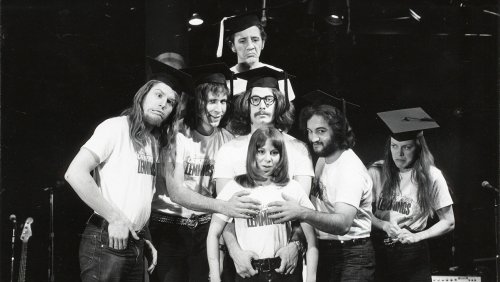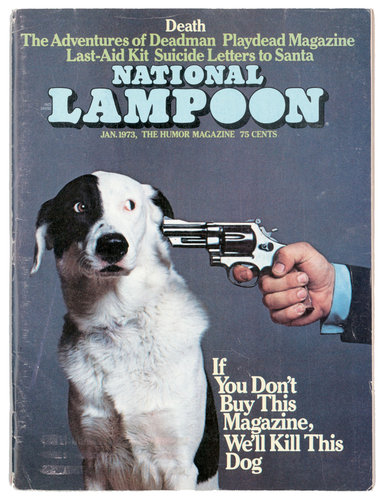
DRUNK STONED BRILLIANT DEAD: The Story of the National Lampoon takes us through an engaging and comprehensive history of the groundbreaking and seminal satirical magazine. For those of you who weren’t there, the National Lampoon – ever irreverent, raunchy and tasteless – was at the vanguard of the counter-culture in the early 1970s. Once reaching the rank of #2 news stand seller among all US magazines, it may be the most popularly accepted subversive art ever in the US (along with the wry Mad magazine during the Cold War).
In a few short years, the Lampoon rose from nowhere (well, actually from the Harvard Lampoon) to a humor empire with the magazine, records, a radio show and a traveling revue. And, yes, the title DRUNK STONED BRILLIANT DEAD does encapsulate the arc of the Lampoon’s story.
Documentarian Douglas Tirola tells the story so successfully because he persuaded almost all the surviving key participants to talk. We meet co-founder Henry Beard, publisher Matty Simmons, Art Director Michael Gross and other Lampoon staff including P.J. O’Rourke and Christopher Buckley. You’ll recognize the first editor, Tony Hendra, from his performance as the harried band manager in This Is Spinal Tap. We see clips of two Lampoon originals who haven’t survived, co-founder Doug Kenney and resident iconoclast Michael O’Donoghue.
The National Lampoon’s live performance revue featured John Belushi, Chevy Chase, Bill Murray, Brian Doyle Murray, Gilda Radner and Harold Ramis. When Lorne Michaels hired the whole crew for Saturday Night Live, the hit television show instantly surpassed the magazine in cultural penetration. “The Lampoon lost its exceptionalism”, says one observer.
But the Lampoon made its mark on the movies by launching the entire genre of raunchy comedies with Animal House and spawning the careers of filmmakers John Landis and Harold Ramis, as well as the SNL performers. We also see a clip of Christopher Guest in an early Lampoon performance. On the other hand, I hadn’t remembered a less successful Lampoon project from its later era, Disco Beaver from Outer Space.
This is all, of course, major nostalgia for Baby Boomers. Before seeing DRUNK STONED BRILLIANT DEAD, I thought, yeah, I’ll enjoy the Blast From The Past, but will younger audience viewers dismiss this humor as quaint? After all, the Lampoon’s success came from puncturing the boundaries of taste, and it’s hard to imagine anything today that would be shockingly raunchy. But, after watching DRUNK STONED BRILLIANT DEAD, I have to say that the humor stands up today as very sharp-edged. After all, an image of a baby in a blender with Satan’s finger poised to press the “puree” button is pretty transgressive no matter when it’s published. The sole exception is the Lampoon’s over-fixation on women’s breasts, which comes off today as pathetically sophomoric – or even adolescent.
DRUNK STONED BRILLIANT DEAD: The Story of the National Lampoon has also vaulted on to my list of Longest Movie Titles.
DRUNK STONED BRILLIANT DEAD is currently knocking about the film festival circuit, and distribution theatrically or on another platform is unresolved. I saw it at the San Francisco International Film Festival. This is an important cultural story, well-told and it deserves a wide audience.

